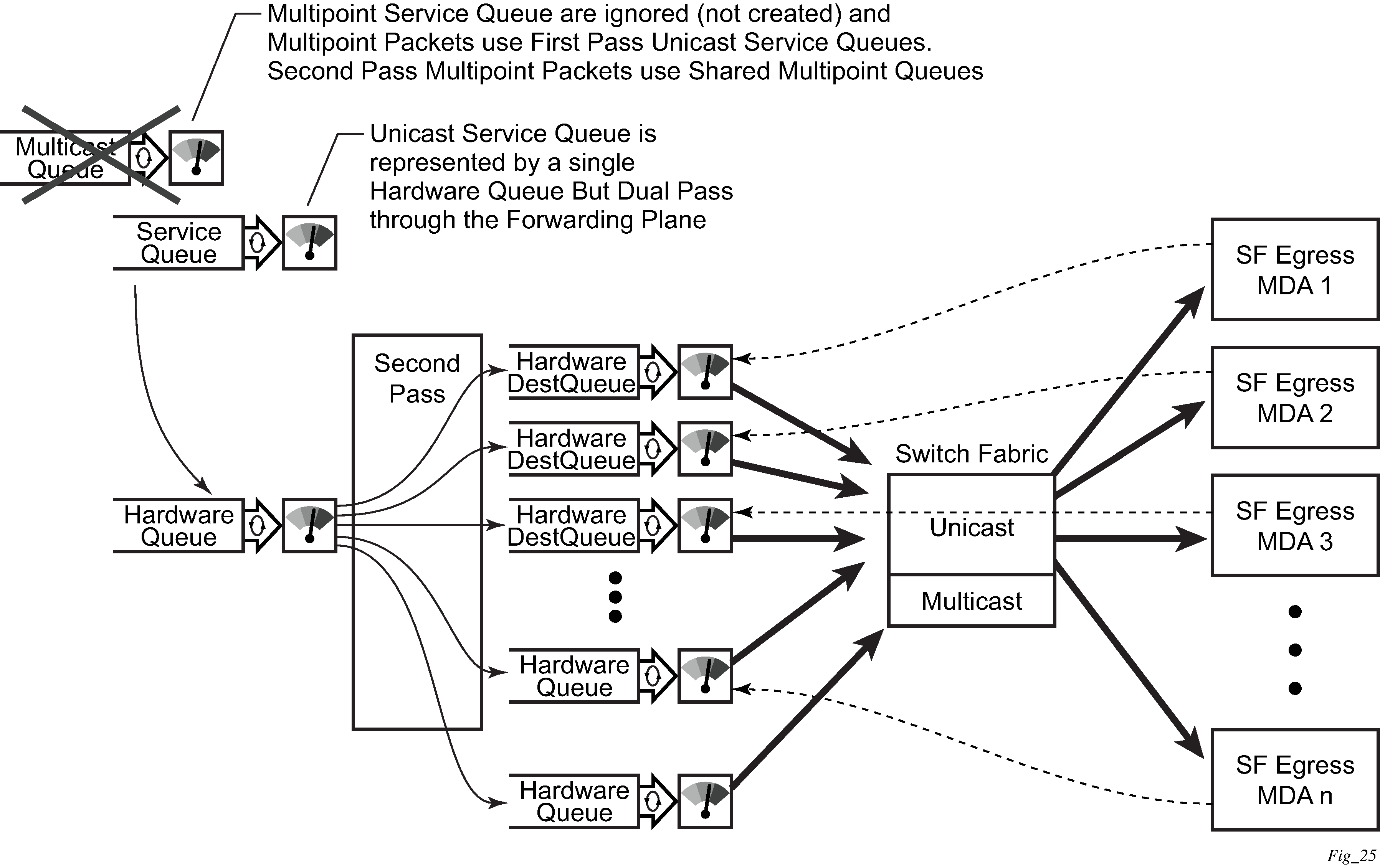Shared queueing is only supported on FP1- and FP2-based hardware. Ingress multipoint shared queuing is a variation of the unicast shared queuing defined in Ingress shared queuing. With ingress multipoint shared queuing, ingress unicast service queues are mapped one-for-one with hardware queues and unicast packets traverse the ingress forwarding plane twice. In addition, the multipoint queues defined in the ingress SAP QoS policy are not created. Instead, multipoint packets (broadcast, multicast, and unknown unicast-destined) are treated to the same dual-pass ingress forwarding plane processing as unicast packets. In the first pass, the forwarding plane uses the unicast queue mappings for each forwarding plane. The second pass uses the multipoint shared queues to forward the packet to the switch fabric for special replication to all egress forwarding planes that need to process the packet.
The benefit of defining multipoint shared queuing is the savings of the multipoint queues per service. By using the unicast queues in the first pass, then the aggregate shared queues in the second pass, per service multipoint queues are not required. The predominant scenario where multipoint shared queuing may be required is with subscriber managed QoS environments using a subscriber per SAP model. Usually, ingress multipoint traffic is minimal per subscriber and the extra multipoint queues for each subscriber reduce the overall subscriber density on the ingress forwarding plane. Multipoint shared queuing eliminates the multipoint queues, sparing hardware queues for better subscriber density. Figure: Multipoint shared queuing using first pass unicast queues shows multipoint shared queuing.
One restriction of enabling multipoint shared queuing is that multipoint packets are no longer managed per service (although the unicast forwarding queues may provide limited benefit in this area). Multipoint packets in a multipoint service (VPLS, IES, and VPRN) use significant resources in the system, consuming ingress forwarding plane multicast bandwidth and egress replication bandwidth. Usually, the per service unicast forwarding queues are not rate limited to a degree that allows adequate management of multipoint packets traversing them when multipoint shared queuing is enabled. It is possible to minimize the amount of aggregate multipoint bandwidth by setting restrictions on the multipoint queue parameters in the QoS nodes shared queue policy. Aggregate multipoint traffic can be managed per forwarding class for each of the three forwarding types (broadcast, multicast, or unknown unicast – broadcast and unknown unicast are only used by VPLS).
Another restriction for multipoint shared queuing is that multipoint traffic now consumes double the ingress forwarding plane bandwidth because of dual-pass ingress processing.

Multipoint shared queuing cannot be enabled on the following services:
Epipe
Ipipe
Routed CO
For information about the tasks and commands necessary to access the CLI and to configure and maintain the router, see the Entering CLI Commands chapter in the 7450 ESS, 7750 SR, 7950 XRS, and VSR Classic CLI Command Reference Guide.